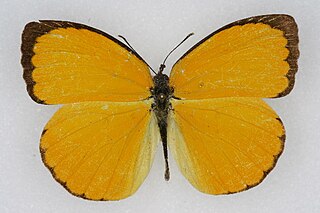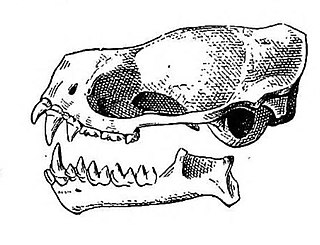
Central America is a region of the Americas. It is bordered by Mexico to the north, Colombia to the southeast, the Caribbean Sea to the east and the Pacific Ocean to the west and south. Central America consists of seven countries: Belize, Costa Rica, El Salvador, Guatemala, Honduras, Nicaragua, and Panama. Their combined population is estimated at 44.53 million (2016).

Panama, officially the Republic of Panama, is a transcontinental country in Central America and South America, bordered by Costa Rica to the west, Colombia to the southeast, the Caribbean Sea to the north, and the Pacific Ocean to the south. The capital and largest city is Panama City, whose metropolitan area is home to nearly half the country's 4 million people.

Panama City, also simply known as Panama, is the capital and largest city of Panama. It has an urban population of 880,691, with over 1.5 million in its metropolitan area. The city is located at the Pacific entrance of the Panama Canal, in the province of Panama. The city is the political and administrative center of the country, as well as a hub for banking and commerce.

The Blackburnian warbler is a small New World warbler. They breed in eastern North America, from southern Canada, westwards to the southern Canadian Prairies, the Great Lakes region and New England, to North Carolina.

Darién is a province in Panama whose capital city is La Palma. With an area of 11,896.5 km2 (4,593.3 sq mi), it is located at the eastern end of the country and bordered to the north by the province of Panamá and the region of Kuna Yala. To the south, it is bordered by the Pacific Ocean and Colombia. To the east, it borders Colombia; to the west, it borders the Pacific Ocean and the province of Panama.

Veraguas is a province of Panama, located in the centre-west of the country. The capital is the city of Santiago de Veraguas. It is the only Panamanian province to border both the Atlantic and Pacific oceans. It covers an area of 10,587.6 km² and in 2019 it had an estimated population of 247,644.
The Smithsonian Tropical Research Institute is located in Panama and is the only bureau of the Smithsonian Institution based outside of the United States. It is dedicated to understanding the past, present, and future of tropical ecosystems and their relevance to human welfare. STRI grew out of a small field station established in 1923 on Barro Colorado Island in the Panama Canal Zone to become one of the world's leading tropical research organizations. STRI's facilities provide for long-term ecological studies in the tropics and are used by some 1,200 visiting scientists from academic and research institutions around the world every year.

The desert red bat, also known as the western red bat or southern red bat is a species of microbat found across the Americas. Lasiurus blossevillii is most often found in tree foliage, as are most species in the genus Lasiurus, and is a solitary species.

The Cordillera de Talamanca is a mountain range that lies on the southeast half of Costa Rica and the far west of Panama. Much of the range and the area around it is included in the La Amistad International Park, which also is shared between the two countries.

The Costa Rican páramo, also known as the Talamanca páramo, is a natural region of montane grassland and shrubland of Costa Rica and western Panama.

Santa Rita Arriba is a town in the Colón province of Panama. This locality has a particular tropical forest and mountainous ecosystem; with elevation of 200 m above sea level. It is near the Panama Canal lakes and the Trinidad River. The area holds an important diversity of insects, and as a result, recently has been described a new rare moth of the genus Pavolechia.

Anthanassa frisia, the Cuban crescentspot, Cuban checkerspot or Cuban crescent, is a butterfly of the family Nymphalidae. Subspecies tulcis is known by the common names pale-banded crescent or Tulcis crescent; it is treated as a species by some authors. The nominate subspecies is found in the West Indies and southern Florida, with strays to northern Florida. Subspecies tulcis is found from Argentina north through Central America and Mexico to southern Texas, strays to west Texas and southern Arizona. Other subspecies are resident to South America.

Ithonidae, commonly called moth lacewings and giant lacewings, is a small family of winged insects of the insect order Neuroptera. The family contains a total of ten living genera, and twelve extinct genera described from fossils. The modern Ithonids have a notably disjunct distribution, while the extinct genera had a more global range. The family is considered one of the most primitive living neuropteran families. Ithonids may be phytophagous. The family has been expanded twice, first to include the genus Rapisma, formerly placed in the monotypic family Rapismatidae, and then in 2010 to include the genera that had been placed into the family Polystoechotidae. Both Rapismatidae and Polystoechotidae have been shown to nest into Ithonidae sensu lato.

A large number of arthropods are associated with sloths. These include biting and blood-sucking flies such as mosquitoes and sandflies, triatomine bugs, lice, ticks and mites. The sloth’s fur forms a micro-ecozone inhabited by green algae and hundreds of insects. Sloths have a highly specific community of commensal beetles, mites and moths.

Eurema dina, the dina yellow, is a butterfly in the family Pieridae. The species was first described by Felipe Poey in 1832. It is found from Panama north to southern Florida. The species is regularly recorded from southern Texas and south-eastern Arizona. The habitat consists of forest edges, brushy fields and open forest.
Acraga ria is a moth of the family Dalceridae. It is found in southern Brazil and Peru. Records from Panama represent a misidentification. The habitat consists of subtropical moist forests.
Acraga isothea is a moth in the family Dalceridae. It was described by Paul Dognin in 1914. It is found in Costa Rica and Panama. The habitat consists of tropical premontane wet and rain forests.
Automeris celata is a moth of the family Saturniidae. It is found in the forests of tropical America, where it has been recorded from Mexico, Costa Rica, Panama and Colombia.

Eumops nanus is a species of bat found in Central and South America.
Annette A. Aiello is an American zoologist, botanical entomologist, and professor. She develops academic activities at the Smithsonian Tropical Research Institute.














